Classical Music Recordings with Sennheiser RF Condenser Microphones
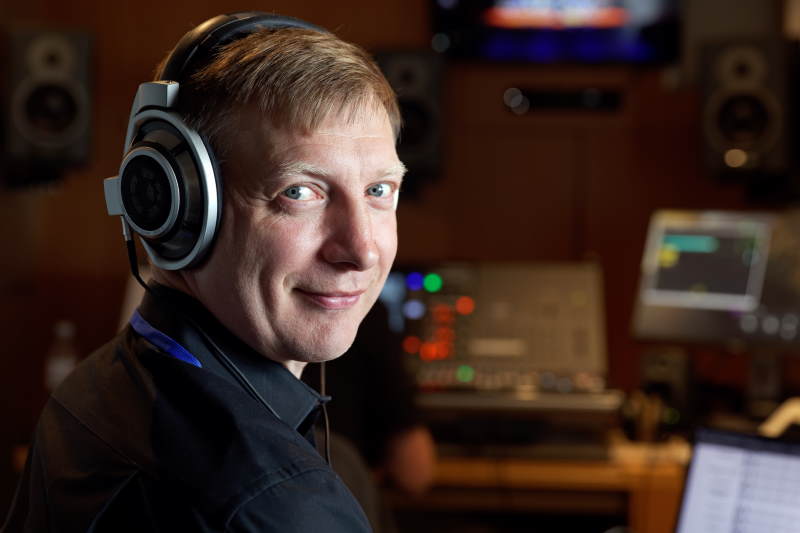
Olaf Mielke
MBM Mielke Bergfeld Musikproduktion OHG, based in Darmstadt, Germany, specialises in making classical music recordings of the highest quality and was founded in 1998 by Olaf Mielke, Dipl.-Tonmeister/Recording Producer, and Moritz Bergfeld, Dipl.-Tonmeister, Professor of Music Production, Post-Production and Music Acoustics at Darmstadt University of Applied Sciences.
“Moritz and I both went to Detmold University of Music and it was while we were still students of sound engineering there that we already decided that we wanted to initiate some projectof our own as a team,” Olaf Mielke recalls. “After various internships, it became absolutely clear to us that our aim was to be independent and set up our own business as sound engineers.”
The company MBM was founded at a time when the large record companies were significantly reducing their music projects due to a decline in the sales of recorded music on physical media, while at the same time the universities in Detmold and Berlin were still turning out a relatively large number of sound engineering graduates. “We were idealistic and optimistic,” says Olaf Mielke, commenting on the foundation of MBM, a risky venture that certainly required a good deal of courage.
The young entrepreneurs were helped by the fact that music was being distributed less and less on physical media such as CDs but increasingly through other forms such as streaming, and this trend is continuing: “More recordings are being made now than ever before,” Olaf Mielke points out, referring to orders from record companies, radio stations, film and TV producers, musicians and music festivals who all want to launch ambitious projects on their own.
Interestingly, after initially causing a massive slump in business, the pandemic has since provided MBM with bulging order books: “Since November 2020, I think we could have split ourselves into four to deal with the workload,” is how Olaf Mielke describes the exceptionally high demand. This is undoubtedly also due to the fact that musicians from MBM’s customer base, which has steadily grown over the years, had no opportunities to give performances and therefore had to focus on recordings or on streaming their live concerts without a local audience.
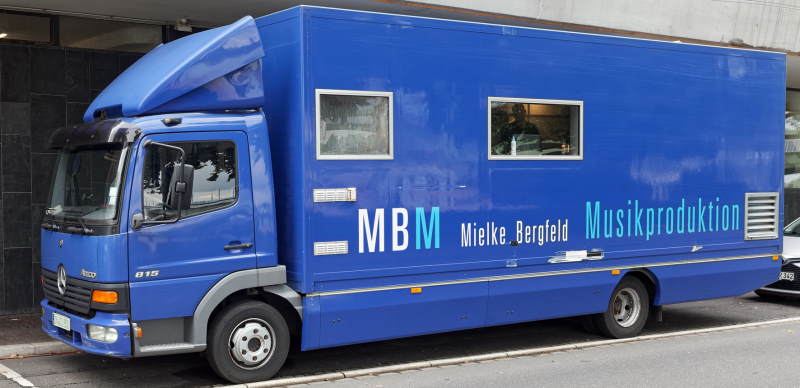
After more than two decades and countless projects, it is now absolutely clear that the decision to found the company was spot on, especially because there is an international demand for the services provided by MBM Mielke Bergfeld Musikproduktion OHG. In Germany and neighbouring countries, they are regularly out on location in their OB van, a Mercedes-Benz Atego 815 with a box body, which is fully equipped according to their needs. MBM also has a post-production studio, but specialises in on-location recordings. If the OB van stays in Darmstadt, Olaf Mielke and Moritz Bergfeld are often out and about with their mobile equipment, using their skills to carry out highly demanding recordings or providing live streams with excellent sound at various locations around the world.
In the meantime, one focus of MBM’s classical music portfolio is on ‘early music’, which is often recorded with historical instruments at their original performance locations and for which there is currently a great demand. MBM sees itself primarily as a service provider, but is also active as a label operator (Coviello Classics). “Even after more than 20 years in the business, Moritz and I are still incredibly passionate about what we do,” says Olaf Mielke. “For us, sound recordings are not necessary work, but purely and simply our lives!”
“As a classical tonmeister, I want to capture the sound with all its nuances, as naturally and as true to the original as possible,” says Olaf Mielke, expressing his credo. “From this perspective, I find the digital microphones from Sennheiser and Neumann extremely attractive with their exceptionally fine resolution.”
In keeping with Mielke’s statement, MBM has eight Sennheiser MZD 8000 digital modules as well as nine digital Neumann KM D output stages and three digital Neumann D-01 large diaphragm microphones. MBM currently uses two RME DMC 842 interfaces/controllers for digital microphones, and a third device is to be added soon, making it possible, for example, to use a 24 configuration to record a small orchestra entirely with digital microphones.
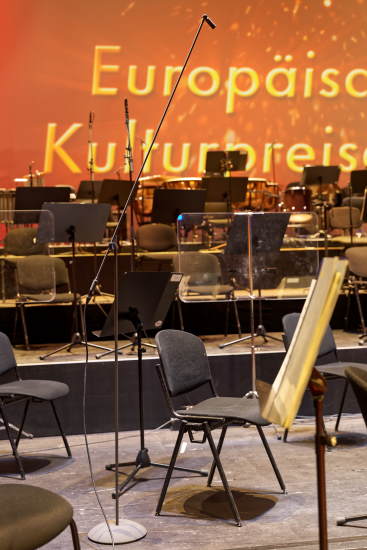
Olaf Mielke is a self-confessed fan of the Sennheiser MKH 8000 series: “For MBM, the Sennheiser MKH 8000 series is our preferred product range,” says the experienced tonmeister. “Before the 8000 series became available, we had already bought a lot of products from Neumann’s first modular small-diaphragm microphone system. To this day, the capsules and output stages have done their job without any problems, and our Neumann inventory also includes pressure receivers with diffuse-field equalisation. We now have 16 microphones from the Sennheiser 8000 series: ten MKH 8040 cardioids, two 8020 omnis, two 8050 super-cardioids and two 8090s with a wide cardioid pick-up pattern.”
The numerous advantages of the microphones from the Sennheiser MKH 8000 series include a wider frequency response that extends from below 10 Hz to more than 50 kHz. In order to record and process this vast frequency range, MBM relies whenever possible on an audio workflow with a word length of 24 bits at a sampling rate of 96 kHz, with some projects even working with 192 kHz. The only exceptions are radio and film productions, where the preferred sampling rate is traditionally 48 kHz. For selected customers in Germany, Japan and the USA, MBM also provides productions in a 5.1 surround sound format. MBM is also seriously considering the possibility of immersive audio recordings using formats such as Dolby Atmos.
Olaf Mielke also points out that the discreet appearance of the microphones from the Sennheiser MKH 8000 series is a particular advantage when video recordings are on the agenda. Mielke uses the term “active bars” to refer to special signal-carrying microphone boom arms that are available in different lengths and which supply the signals from the compact capsules to XLR plugs at their ends. Their matt textured finish also helps to give the Sennheiser MKH 8000 series a visually unobtrusive appearance.
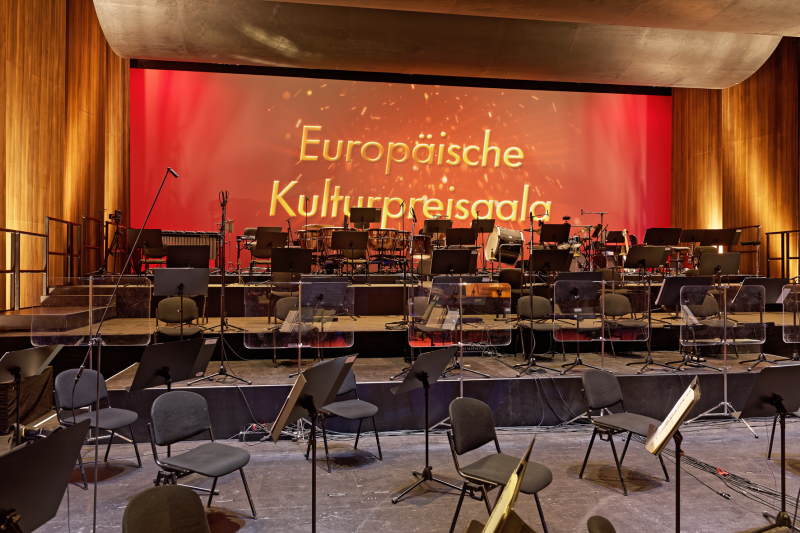
“We are extremely satisfied with the microphones from the Sennheiser 8000 series,” Olaf Mielke points out. “And the Sennheiser support is also perfect. Our contact person, Heiko Mildenberger, is always there to help us whenever we need him.”
At the end of August, the European Culture Award was presented at the Opera House in Bonn. The “gala evening in the spirit of Beethoven” saw music stars such as Till Brönner, David Garrett, Diana Damrau, Katie Melua and the Scorpions take to the stage. The musical accompaniment was provided the Beethoven Orchestra Bonn, which was only recently appointed as a UN Climate Change Goodwill Ambassador, led by its General Music Director Dirk Kaftan. The event’s presenters were soprano Annette Dasch and culture journalist Axel Brüggemann, who welcomed celebrities such as Katharina Witt, Nico Rosberg, Tobias Moretti and Barbara Meier. As the media partner for the European Culture Award, Deutsche Telekom broadcast the almost three-and-a-half hour long gala live on MagentaMusik 360 and on the channel #dabeiTV on MagentaTV.
During the event, MBM had parked the company’s own OB van on the bank of the Rhine directly in front of the Bonn Opera House. As head sound engineer at the European Culture Award 2021, Olaf Mielke was responsible for the broadcast sound, which was transmitted via a satellite uplink. In addition to the 5.1 loudspeaker system installed in the OB van, Mielke also used high-quality studio headphones from Sennheiser (HD 800) and Neumann (NDH 20) to monitor the sound.
Olaf Mielke and his team used microphones from Sennheiser und Neumann to capture the sound of the orchestra. The lion’s share of the broadcast sound was supplied by an A/B microphone setup with suspended Neumann AK 30 omni-directional capsules on KM 100 output stages. These were supported by more than 30 spot microphones, including Neumann KM 100, Neumann U 87 and numerous capsules together with their accessories from the Sennheiser MKH 8000 series. The presenters’ microphone at the lectern also came from the 8000 product range: An MKH 8040 with an MZW 8000 foam windshield ensured excellent sound for the voices and optimum speech intelligibility.

Ambience microphones are important in providing emotionally thrilling live broadcasts, and for that reason Olaf Mielke set up two MKH 8050 directed towards the audience at the front edge of the stage, supported by two Neumann KM 184 suspended vertically above the audience. Finally, in the so-called “handshake area”, in which non-monetary awards were presented to clearly delighted recipients, an MKH 8040 mounted near the floor was used. A total of 124 channels were processed in MBM’s OB van to mix the sound for the European Culture Award 2021.
With the MKH 8000 series, Sennheiser has already had an absolutely top-class modular small-diaphragm microphone system in its product range since 2007. The series includes, among other things, the MKH 8020 capsule (omni-directional), MKH 8040 (cardioid), MKH 8050 (super-cardioid) and MKH 8090 (wide cardioid), which are operated with remote preamplifiers/impedance converters. Also available are the MZX 8000 XLR module and the MZD 8000 digital module. In some applications, it is advisable to additionally use an MZF 8000 filter module, which has a fixed low-cut filter (-3 dB at 16 Hz, for the suppression of infrasound), as well as a switchable roll-off filter (-3 dB at 160 Hz) and a switchable pad (-10 dB, to protect against overdriving).
The Sennheiser MKH 8000 condenser series works according to the high or radio-frequency principle, which Sennheiser has been using for more than five decades and has continuously perfected. Sophisticated technology is used to widen the frequency response. Microphones from the Sennheiser 8000 series have a frequency response that extends from below 10 Hz to more than 50 kHz. Expert sound engineers particularly appreciate the fact that the small-diaphragm microphones from the audio specialist deliver high output signals with almost no inherent self-noise and have extremely low distortion. In addition to their amazingly clear output, the low moisture sensitivity of RF condenser microphones is almost legendary. Actually, the abbreviation MKH itself refers to the microphone’s radio-frequency circuitry, as it stands for “Mikrofon Kondensator Hochfrequenz”, or radio-frequency condenser microphone.
Thanks to its comprehensive range of accessories, the Sennheiser MKH 8000 series is equipped for all application scenarios. Particularly popular are the microphone extension bars with their internal cable routing, which sound engineers like to call “active stands” or “active bars”. The microphone module is fixed to an adjustable joint at the upper end of the active bar, while the XLR module is used at the lower end separated from the capsule. These “signal-carrying special extension tubes” are available in the versions MZE 8015 (15 cm), MZE 8030 (30 cm), MZE 8060 (60 cm) and MZE 8120 (120 cm).
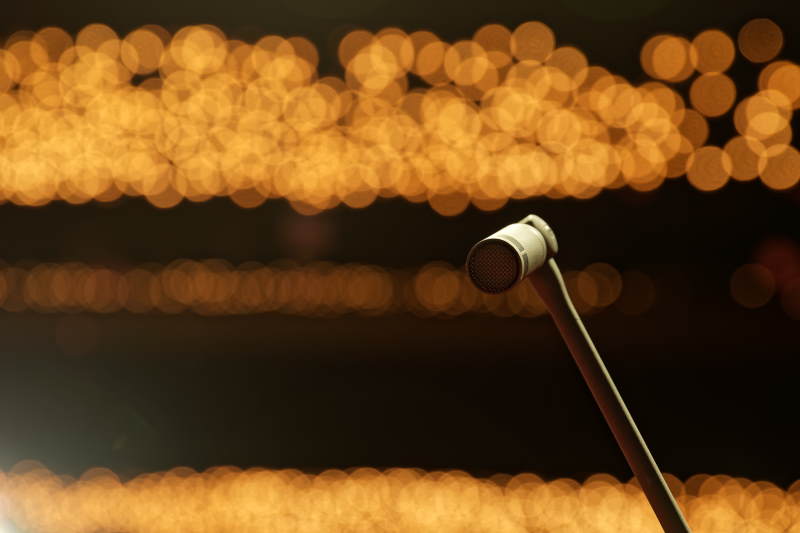
The extension tubes are connected to the vertical bars by MZGE 8000 mono tube connectors or MZGE 8002 stereo tube connectors. The MZEF 8030 (30 cm), MZEF 8060 (60 cm) and MZEF 8120 (120 cm) vertical bars have an MZFS 8000 solid floor stand, which has a damping ring as a special feature. This floor stand ensures that the microphone is held securely, and the stand itself requires less space than a conventional tripod stand.
All components of the Sennheiser MKH 8000 series, including the microphone capsules, are finished in a matt velvet-textured NEXTEL coating, which does not reflect (stage) light and, with its dark colour, helps to give the microphones a discreet and at the same time high-quality appearance.
www.mbmmusikproduktion.de
www.europaeischer-kulturpreis.de
www.sennheiser.com
 How to resolve AdBlock issue?
How to resolve AdBlock issue?